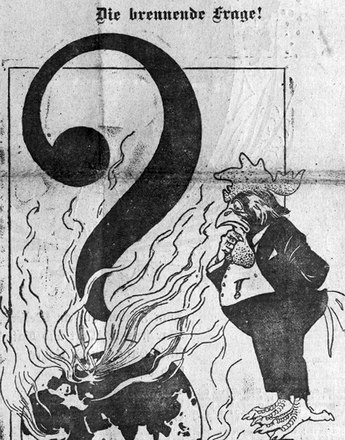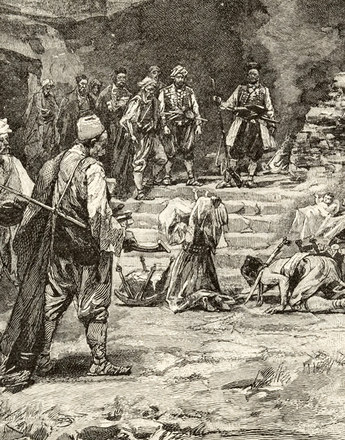Having suffered great distress at the hands of the Central Powers, the Balkan states turned out to be the victors of a four-year long mass slaughter. Apart from the territorial expansions of Romania, the Slovenes and Croats in particular flocked around Serbia, eager to establish a multi-ethnic state of the Southern Slavs. As in other regions, the political map of the Balkans was indeed redrawn without ensuring the permanent guarantee of stability. The ‘Great War’ transformed itself in this way into different, smaller zones of conflict. At the same time it became obvious that the problems that had already resurfaced before 1914 were in no way solved, but had in many cases even deteriorated. Under such circumstances, the events at the beginning of the 20th century point ultimately towards its conclusion, to the national hatreds and ‘ethnic cleansings’ of the 1990s.
The collapse of the Habsburg Empire transformed areas of Central, Eastern, and Southern Europe into crisis regions. The countries of St. Stephen’s crown were particularly fought over militarily by the newly founded states of the Czechs, Slovaks and Southern Slavs, and above all by Romania. In this mish-mash of conflicts made up of territorial claims and national, social, economic and ideological controversies, councils-led Hungary played an important part, particularly as the Soviet slogans of the ‘October Revolution’ in Budapest were at the same time turning the opposing governments in Prague, Belgrade and Bucharest into supporters of an Allied, anti-Bolshevik interventionist policy. Less surprising was that against this backdrop, particularly Romania and Greece were presenting themselves as buttresses and operational bases for an immediate attack on the Bolshevik sphere of control in the former Tsarist Empire.
Besides, on account of the break-up of the Ottoman Empire and the treaties signed in the suburbs of Paris, the Balkans remained a ‘powder keg’. After losing almost 70 percent of its former national territory and 59 percent of its previous population – among them 3 million Magyars – in Trianon, Hungary turned towards a revisionist policy that was doomed in the long run, especially under those governments that were rightist-leaning or authoritarian. In contrast, Bulgaria was somewhat better off. Nevertheless, in the Treaty of Neuilly-sur-Seine, Sofia had to give up access to the Aegean, pay reparations and, like the other defeated states, considerably reduce its military forces.
The first to offer opposition were the Turks who fought against the peace terms submitted to them by the Entente in Sèvres, which, amongst other things, conceded Anatolian territory to the Greeks. The ‘remaining torso’, subject to financial control by the Allies to secure occupational costs, ended the reign of the sultan, signatory of the treaty of Sèvres, with the ‘national revolution’ under Kemal Pasha. A republic emerged which claimed full sovereignty for Anatolia, forcing the troops of the Entente to retreat and ethnically separating itself from the Greeks through a large-scale population exchange. Under such circumstances, the Treaty of Lausanne in 1923 failed to resolve the conflicts. On the contrary, the events from the eve of the First World War to the early 1920s laid foundations from the Danube to the Aegean for new disputes and especially for national rivalries.
Leidinger, Hannes/Moritz, Verena: Der Erste Weltkrieg, Wien/Köln/Weimar 2011
-
Chapters
- The Fading-Out of the Balkan Front
- The War before the War
- Sarajevo and the July Crisis
- Ethnic Conflicts and the Brutalisation of the Battles
- Disillusionment for the Army – The Failed ‘Punitive Expedition’
- ‘The Allies’ Successes’
- The Occupying Regime in Different Regions
- Romania's Entry into the War and Defeat by the Central Powers
- Greece on the Side of the Entente
- 1918 – Peace between Romania and the Central Powers
- Consequences of the War on the Balkans








